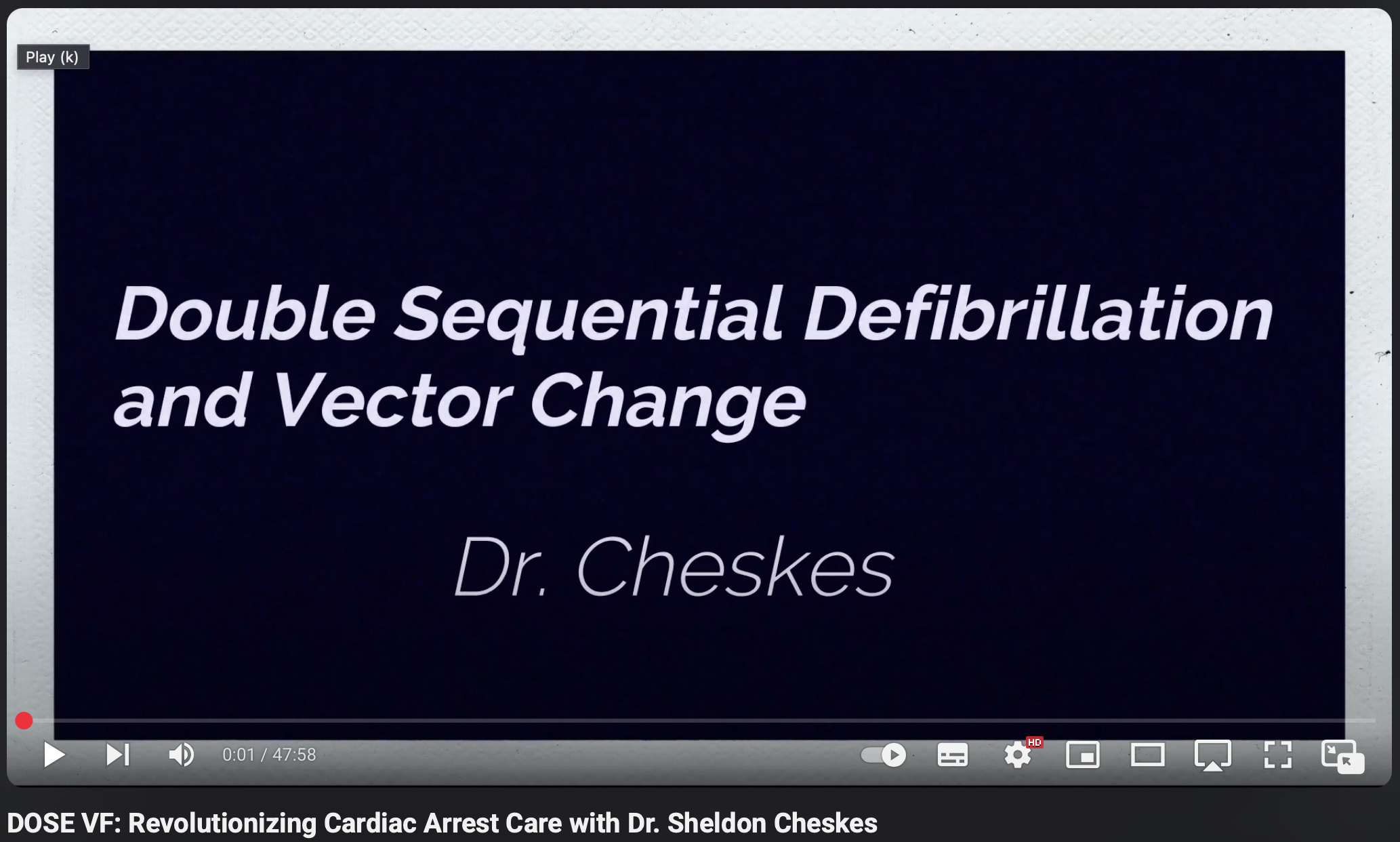Approach to Vector Change and DSED
Question #43
Answer:
Once an advanced defibrillation strategy such as DSED or VCD has been initiated, it should be maintained for all subsequent defibrillation attempts, including after ROSC and in the event of rearrest. This approach ensures consistency in treatment and aligns with current best practices for managing refractory ventricular fibrillation (VF).
- If DSED was initiated, continue using DSED for all future shocks.
- If VCD was used due to the unavailability of a second defibrillator, and a second defibrillator becomes available later, switch to DSED and continue with it for subsequent defibrillations.
This protocol is supported by the Advanced Life Support Patient Care Standards (ALS PCS) Version 5.4, which states that for patients in refractory VF or pulseless VT, DSED should be considered if authorized, or VCD if DSED is unavailable or not authorized .
Example 1:
A patient receives three standard defibrillations with no conversion. You switch to DSED and achieve ROSC. Ten minutes later, the patient rearrests. You should continue with DSED for all future defibrillation attempts.
Example 2:
A patient is in refractory VF and you perform a vector change defibrillation due to a lack of a second defibrillator. ROSC is achieved, but the patient rearrests and a second defibrillator is now available. You should now switch to DSED and use it for all remaining shocks.
For a more in-depth discussion on this topic, you may refer to the following podcast featuring Dr. Sheldon Cheskes:
 yle="display: block; margin-left: auto; margin-right: auto;" />
yle="display: block; margin-left: auto; margin-right: auto;" />
Medical Directive Category
Published
ALSPCS Version
Views
Please reference the MOST RECENT ALS PCS for updates and changes to these directives.

